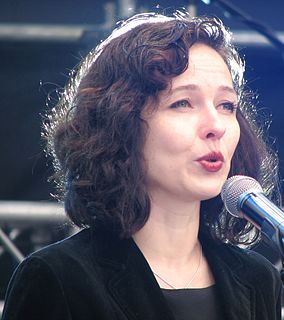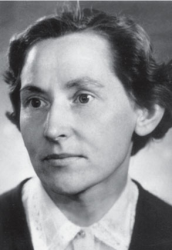
Andrew John Young was a Scottish poet and clergyman although recognition of his poetry was slow to develop.

Jaan Kaplinski was an Estonian poet, philosopher, and culture critic, known for his focus on global issues and support for left-wing/liberal thinking. He was influenced by Eastern philosophical schools.

Ene Mihkelson was an Estonian writer. She was a recipient of the Herder Prize and the Baltic Assembly Prize for Literature.

Elo Viiding is an Estonian poet and prose writer.
Estonian literature is literature written in the Estonian language The domination of Estonia after the Northern Crusades, from the 13th century to 1918 by Germany, Sweden, and Russia resulted in few early written literary works in the Estonian language. The oldest records of written Estonian date from the 13th century. Originates Livoniae in Chronicle of Henry of Livonia contains Estonian place names, words and fragments of sentences. The Liber Census Daniae (1241) contains Estonian place and family names. The earliest extant samples of connected Estonian are the so-called Kullamaa prayers dating from 1524 and 1528. The first known printed book is a bilingual German-Estonian translation of the Lutheran catechism by S.Wanradt and J. Koell (1535). For the use of priests an Estonian grammar was printed in German in 1637. The New Testament was translated into southern Estonian in 1686. The two dialects were united by Anton Thor Helle in a form based on northern Estonian. Writings in Estonian became more significant in the 19th century during the Estophile Enlightenment Period (1750–1840).

August Gailit was an Estonian writer.
Kersti Merilaas was an Estonian poet and translator. In addition, she wrote poems and prose for children and plays.
August Sang was an Estonian poet and literary translator.
Jaan Kärner was an Estonian poet and writer. He is known especially for his nature poetry. Many of his poems were set to music by Estonian composers of choral music. Kärner also wrote numerous novels, plays, works of literary criticism, and scientific literature and historical treatises. He translated works from German and Russian, most notably the poems of Heinrich Heine into Estonian in 1934.

Hugo Raudsepp was an influential and prolific Estonian playwright and politician. In 1951 he was deported to the Irkutsk region by the Soviet authorities, where he died.

Mait Metsanurk was an Estonian writer who led the neo-realist school of Estonian literature.
Karl Ast was an Estonian writer and politician.

Aleksander Jaakson was an Estonian general and educator. After beginnings as a teacher in Türi, he served with the Imperial Russian Army in World War I, and was advanced to Staff Captain. During the disintegration of the Russian Republic in 1917, he returned home to establish a branch of the Estonian Defence League. He was a decorated participant in the Estonian War of Independence and later continued serving in the Estonian Defence Forces in various positions, including military education.

Anne Green was an American writer and translator, the sister of Julien Green. While a child, Green's parents moved to France, where her father, ruined by a financial crisis and poor investments, came to settle. She spent her childhood in Le Havre, before her parents moved to Paris, where her brother Julien was born. She and her brother both participated in World War I, in which she volunteered as an ambulance driver.

Eeva Park is an Estonian writer.
Ellen Alaküla was an Estonian stage, radio, television, and film actress and theatre teacher whose career spanned over forty years.
Aadu Hint was an Estonian writer. Most of his books are related to dwellers, who are living on Estonian islands.
Aira Kaal was an Estonian writer.
Salme Ekbaum was an Estonian writer and poet.
Juhan Sütiste was an Estonian poet.










